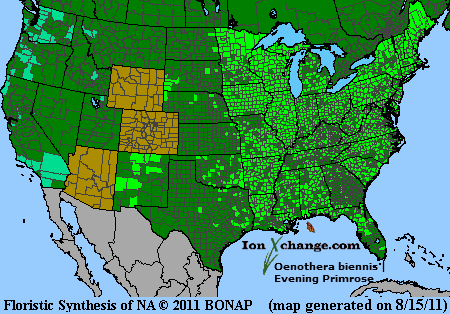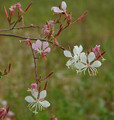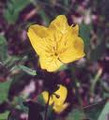 Loading... Please wait...
Loading... Please wait...- Home
- SEEDS
- SEED MIXES
- BUY PLANTS
- Info Request
-
Educational Videos
- Greenhouse Transplanting Demonstration
- Native Seed Cleaning demonstration at Ion Exchange Native Seed and Plant Nursery
- Attracting Butterflies
- Bidens - Bidens cernua Harvest Video
- Big Blue Stem Harvest
- Butterfly Milkweed Video
- Button Blazingstar - Liatris aspera Video
- Buttonbush - Cephalanthus occidentalis Video
- Canada Anemone - Anemone canadensis Harvest Video
- Cardinal Flower - Lobelia cardinalis Video
- Control Burn - Wildflower Field
- Cream Gentian - Gentiana flavida
- Culver's Root - Veronicastrum virginicum Video
- Cup Plant - Silphium perfoliatum Video
- Dormant Seeding | Planting
- Earthyman's Favorite Wildflowers Video
- Eco-Friendly Golf Course Seed Mix
- Floating Islands
- Fringed Loosestrife - Lysimachia ciliata Video
- Giant Yellow Hyssop - Agastache nepetoides Video
- Indiangrass - Sorghastrum nutans Video
- Iowa Prairie Partner Program
- Leadplant - Amorpha canescens (Potted) Video
- Meadow Blazingstar - Liatris ligulistylis
- Midland Shooting Stars - Dodecatheon meadii Video
- Native Plant Nursery Field Irrigation Experiment
- Nodding Onion - Allium cernuum Video
- Ohio spiderwort - Tradescantia ohiensis Video
- Old Man's Beard - Clematis virginiana blooms Video
- Oxeye Sunflower - Heliopsis helianthoides Video
- Prairie Spiderwort - Tradescantia bracteata
- Purple Coneflower - Echinacea purpurea Video
- Rain Garden or Water Garden Video
- Rattlesnake Master - Eryngium yuccifolium Video
- Riverbank Stabilization - Wetland Plants
- Rose Mallow - Hibiscus militaris Video
- Rosinweed - Silphium integrifolium Video
- Royal Catchfly - Silene regia
- Showy Tick Trefoil - Desmodium canadense Video
- Sneezeweed - Helenium autumnale Video
- Swamp Betony - Pedicularis lanceolata Video
- Swamp Milkweed - Asclepias incarnata Video
- Sweet Blackeyed Susan - Rudbeckia subtomentosa Video
- Tall Coreopsis - Coreopsis tripteris Video
- Urban Butterfly Garden
- Wild Bergamot - Monarda fistulosa Video
- Wild Geranium - Geranium maculatum Harvest
- Wild Goldenglow - Rudbeckia lanciniata Video
- Wild Petunia - Ruellia humilis Harvest Video
- Woodland Knotweed - Polygonum virginianum Video
- Yellow Coneflower - Ratibida pinnata Video
- Blog
- Resources
- Policies
Contact Us
Phone:
563-419-0837
or 563-535-7231
Email:
hbright@ionXchange.com
Browse Products
Add to Wish List
You Recently Viewed...
Our Newsletter
Product Description
Night Willow-herb, Large Rampion, Tree-primrose, King's Cure-all, Scurvish"
| Sun Exposure | Prairie, Savanna |
| Soil Moisture | Wet Mesic, Mesic, Dry Mesic, Dry |
| Bloom Time |
Summer, Fall June, July, August, September |
| Bloom Color | Yellow |
| Max Height | 6 feet |
| Wetland Code | FACU |
| Germ Code | A,D,G |
| Seeds Per Packet | 750 |
| Seeds Per Ounce | 90,000 |
Oenothera was a name used by Theophrastus for a species of Epilobium, another genus in this family. It also comes from the Greek word for "wine-scented"; referring to either the scent of the flowers or the fact the roots were once used to make wine. Biennis from "biennial" because the plant lives for two years.
Found throughout the Tallgrass Region on dry prairies and ridges or sandy areas. It also tends to favor roadsides, old fields and waste areas. Bright yellow flowers appear on a 3 to 5 foot stem from July through September. In its first year, O. biennis is markedly different from the way we normally see it. It is a flattened rosette of elongated leaves with very strong, fleshy roots. It is in the second year that the familiar flowered stem appears.
After drying the entire plant, Native Americans prepared a cold infusion of the pulverized dried plant to treat whooping cough, hiccoughs and asthma. The infusion also served as an astringent and as a sedative. Skin diseases were treated by a salve made from this plant. The Maojave Indians used the seeds as a food source; the roots of the first-year plant were a very important food source for Native Americans. The roots were gathered and dried and used as a gruel or soup thickener. Early settlers also ate the roots and used the young shoots in salads.
Edible Uses: Root - cooked. Boiled and eaten like salsify. Fleshy, sweet and succulent. Wholesome and nutritious. A peppery taste. The taste somewhat resembles salsify or parsnips.
Young shoots - raw or cooked. Mucilaginous, with a peppery flavour, they are best used sparingly. Another source suggests that the shoots should not be eaten. Flowers - sweet. Used in salads or as a garnish. Young seedpods - cooked. Steamed. The seed contains 28% of a drying oil. It is edible and a very good source of gamma-linolenic acid, an essential fatty acid that is not found in many plant sources and has numerous vital functions in the body. The seed, however, is very small and difficult to harvest, it has to be done by hand. Overall yields are low, making the oil very expensive to produce.
Medicinal Uses: The bark and the leaves are astringent and sedative. They have proved of use in the treatment of gastro-intestinal disorders of a functional origin, whooping cough and asthma. A syrup made from the flowers is also an effective treatment for whooping cough. The bark is stripped from the flowering stem and dried for later use, the leaves are also harvested and dried at this time. Evening primrose oil has become a well-known food supplement since the 1980's. Research suggests that the oil is potentially very valuable in the treatment of multiple sclerosis, pre-menstrual tension, hyperactivity etc. It is also taken internally in the treatment of eczema, acne, brittle nails, rheumatoid arthritis and alcohol-related liver damage. Regular consumption of the oil helps to reduce blood cholesterol levels and lower the blood pressure. The seed is a good source of gamma-linolenic acid, an unsaturated fatty acid which assists the production of hormone-like substances. This process is commonly blocked in the body, causing disorders that affect the uterine muscles, nervous system and metabolism. The poulticed root is applied to piles and bruises. A tea made from the roots is used in the treatment of obesity and bowel pains.
Other Uses: The oil from the seed is added to skin preparations and cosmetics. It is often combined with vitamin E to prevent oxidation. A yellow dye is obtained from the flowers. A finely ground powder made from the flowering stems is used cosmetically in face-masks to counteract reddened skins.
Herbal Uses: Unknown











